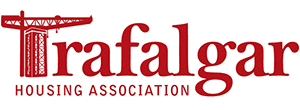Legionella Information
Legionella is a type of bacteria found naturally in freshwater environments, like lakes and streams. It can become a health concern when it grows and spreads in humanmade water systems like showerheads, taps, hot water tanks and heaters. People can contract Legionnaires disease, which is a form of pneumonia, when they breathe in small droplets of water in the air that contain the Legionella bacteria. It can make you very ill. Symptoms are similar to the flu and the illness is treated with antibiotics. Thankfully, catching Legionnaires disease in your home is rare. Most incidents of the disease are caught from faulty air conditioning systems or cooling towers. It is also not infectious so it can’t be passed from person to person. However, there is a possibility that when certain conditions exist in the home it increases your risk. Water that is between 20 - 45°C (lukewarm to hot) is a suitable breeding ground for bacteria to grow. This can happen in large water tanks in lofts that are not used much, or pipes that go to a tap that is hardly ever turned on. The likelihood of Legionella being in your home is very low as most households do not store huge amounts of water and water is used regularly so it’s not standing still in pipes. However, here are some tips to make sure the water in your home is safe. It is worth noting that all Trafalgar’s properties have mains fed water i.e. there are no stored water tanks and all heating systems are combi boilers that provide instant hot water. These are too hot for bacteria to survive.
How to Reduce the Risk of Legionella Bacteria Growth
• If you move into a new home or your home has been lying empty for at least a week, for example, if you’ve been on holiday, then you should flush out your water.
• If you aren’t using showers or taps regularly, make sure you flush them through at least once a week.
• To flush out your water you need to run the water in all showers, baths, wash basins, sinks and taps continuously for at least two minutes, beginning with the sink taps. You must do both hot and cold taps.
• When turning taps on, turn them on slowly so that you don’t splash water, as this might release water droplets into the air.
• When flushing showers, remove the shower head and lower the hose into the bath. If you’re unable to remove the head, wrap it in a towel or facecloth to make sure there is no spray. Legionella can grow and multiply on grime, scale, algae and rust. Make sure you clean and descale all your taps and showerhead every three months or when there is an obvious build up by using a nylon brush or diluted bleach.
